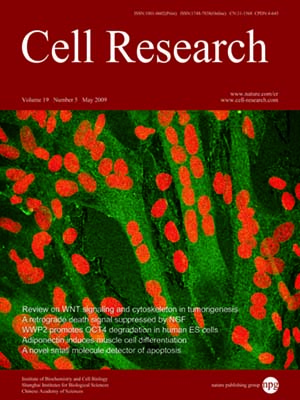
Volume 19, No 5, May 2009
ISSN: 1001-0602
EISSN: 1748-7838 2018
impact factor 17.848*
(Clarivate Analytics, 2019)
Volume 19 Issue 5, May 2009: 612-624
ORIGINAL ARTICLES
PSD-95 regulates D1 dopamine receptor resensitization, but not receptor-mediated Gs-protein activation
Peihua Sun1,*, Jingru Wang1,*, Weihua Gu1,*, Wei Cheng2, Guo-zhang Jin1, Eitan Friedman3, Jie Zheng2 and Xuechu Zhen1
1State Key Laboratory of Drug Research, Department of Neuropharmacology, Shanghai Institute of Materia Medica, Chinese Academy of Sciences, Shanghai 201203, China
2Department of Physiology and Membrane Biology, University of California School of Medicine, Davis, CA 95616, USA
3Department of Physiology & Pharmacology, CUNY Medical School at CCNY, New York, NY, USA
Correspondence: Xuechu Zhen,(xczhen@mail.shcnc.ac.cn)
The present study aims to define the role of postsynaptic density (PSD)-95 in the regulation of dopamine (DA) receptor function. We found that PSD-95 physically associates with either D
1 or D
2 DA receptors in co-transfected HEK-293 cells. Stimulation of DA receptors altered the association between D
1 receptor and PSD-95 in a time-dependent manner. Functional assays indicated that PSD-95 co-expression did not affect D
1 receptor-stimulated cAMP production, Gs-protein activation or receptor desensitization. However, PSD-95 accelerated the recovery of internalized membrane receptors by promoting receptor recycling, thus resulting in enhanced resensitization of internalized D
1 receptors. Our results provide a novel mechanism for regulating DA receptor recycling that may play an important role in postsynaptic DA functional modulation and synaptic neuroplasticity.
Cell Research (2009) 19:612-624. doi: 10.1038/cr.2009.30; published online 10 March 2009
FULL TEXT | PDF
Browse 2046


